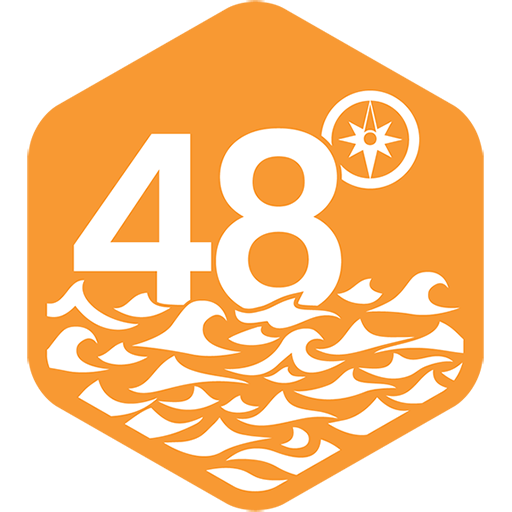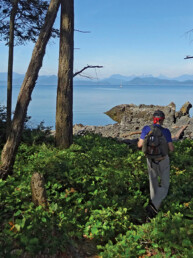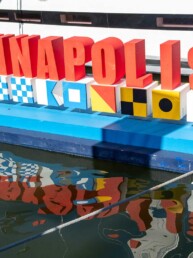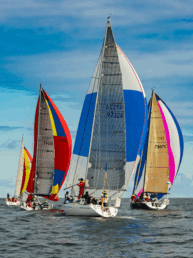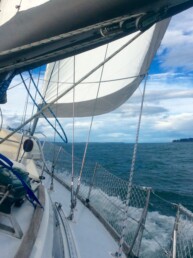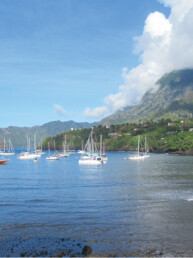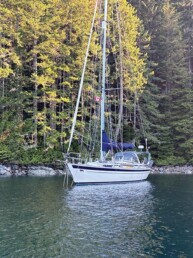Swinging on anchor in a picturesque cove in the eastern Caribbean, my wife Jill and I still love reminiscing about special places in the Pacific Northwest where we’ve had the good fortune to drop our hook.
A few nights ago, we enthusiastically story-topped each other with favorite anchorages in the San Juan and Gulf islands, the west coast of Vancouver Island, and Alaska, and all the fun and sometimes stressful moments that came with them.
There was that unseasonably warm and sunny week in January when we had Princess Cove on Wallace Island all to ourselves. We didn’t need to stern-tie, but we did anyway. Or the stunning views in Alaska of snow-capped mountains and glaciers hanging high above us in impossibly carved valleys that made us feel tiny. And the afternoon we spent watching our oldest son, Porter, practice rowing the dinghy by himself in Barkley Sound. Those are memories and places that we’ll always cherish.
When we cut Yahtzee’s dock lines in Alaska and headed offshore for California and beyond, we felt that our experiences cruising the waters of the Inside Passage had upped our game and prepared us for what was to come. Now, over five years and thousands of miles later, I can confidently say that they did. Here’s a bit of what we learned that has paid off since, which may be useful to PNW cruisers wondering whether their local skills adequately prepare them for faraway destinations.
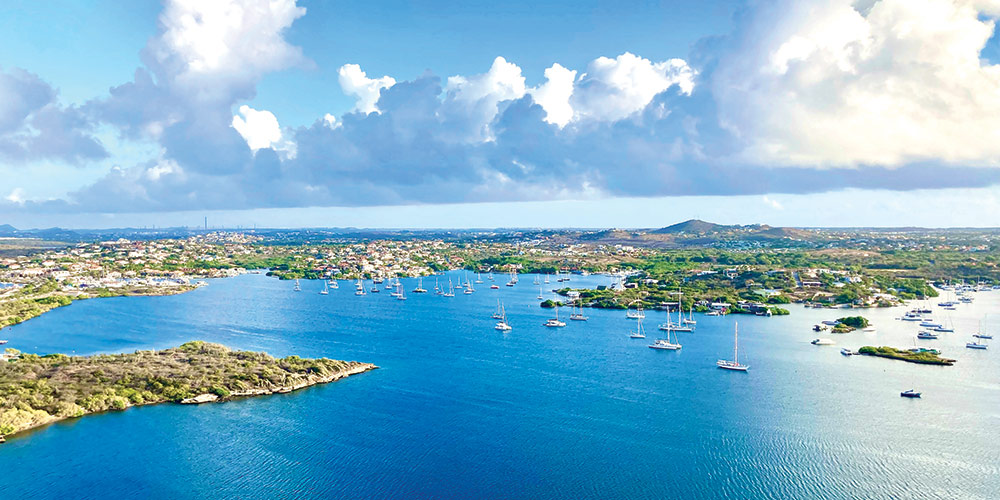
Weather Planning
It all starts with the weather. As sailors, checking and rechecking forecasts and weather models is a daily task. I’m always trying to learn more about how lows and highs move, how winds develop and shift, and how ridges or troughs form. In the Pacific Northwest, particularly in the winter, we lived by the weather and had to pay close attention when storms were approaching and from what direction.
Safe anchorages for the conditions had to be planned accordingly, and we certainly learned our lesson on a few occasions, especially when unforecast winds left us scrambling. We endured a sleepless night off Saddlebag Island near Anacortes when a southerly wind was surprisingly much stronger than we anticipated. The wee-hour restlessness gave us time to reflect on what we might have done differently. Soon thereafter, we put the lesson to good use, planning properly for an approaching winter storm by setting two anchors and two stern-tie lines at Portland Island. The wind howled over the trees and through Royal Cove, and Yahtzee rode out 40+ knot gusts without a problem.
If you’re planning to head out cruising, my best piece of advice is to learn as much as you can about the weather in micro and macro ways. Zoom out at the bigger picture and back in when you get to a new locale. By watching the weather for the areas you’ll be cruising well in advance, you can pick up on any nuances or patterns that might come as less of a surprise later. Try to find maps with topographical information, too. A bay that appears protected might be funneling breeze between mountains over a low isthmus. And tap any connections who you know have visited the area you’re planning to go to find out if there are any weird weather anomalies or any other useful tips.
Anchoring and Stern-tying
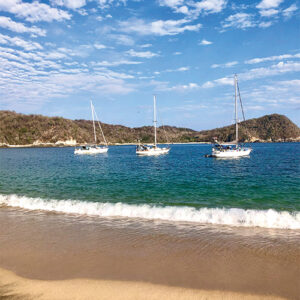
Being well practiced at anchoring your boat in a variety of geographical situations and wind and swell conditions is important no matter where you cruise. In the Pacific Northwest, we almost exclusively anchored with a single anchor from our bow. That is, until we started going north of the San Juan Islands.
In the Gulf Islands and Desolation Sound, we became proficient in stern-tying to rings or chains that are specifically designed and set for that purpose. Then, when we went north of those cruising grounds and the helpful rings were no longer there, we started stern-tying to logs, trees, and rocks with chafe sleeves. In Alaska, where anchorages are deep, it was common practice for us to set our anchor against a steep sloping beach and then stern-tie to shore.
All of that practice was helpful along the coasts of Mexico and Central America. There, we became adept at using a stern anchor to keep Yahtzee’s bow facing the ground swell coming in off the ocean. Without it, we’d be uncomfortably rolling from gunnel to gunnel.
This probably goes without saying, but by being well versed in different anchoring scenarios and techniques you will, in extension, become very well acquainted with your ground tackle and how to use it. Having complete trust in the anchors, chain, and rode that you carry is imperative, and the only way you can gain trust is by setting them… often.
Reefing
We all know some version of the saying that, “The right time to reef is when you first think about it.” That’s because it’s true. But how long it takes you to put in that reef is as important as timing. Similar to anchoring, you can’t do it well or get better at it if you don’t practice.
When we first started cruising full-time in the winter in the Salish Sea, this lesson came quickly. We reefed early and often, and in doing so, we really learned what was the best practice for executing this task efficiently on Yahtzee. Also, I was able to make some minor changes to our setup that would help later. On the passage from Alaska to California, we ended up putting in reefs and shaking them out multiple times. Most of those instances were before more wind arrived, but when we needed it done fast, I was glad to have had all the reps. Depending on whether you cruise with friends, family, or shorthanded, be sure to develop confident reefing skills locally with the number of hands you expect to have available to you at sea.
Remember, reefing isn’t just to keep the boat from heeling too much and decreasing weather helm when you’re sailing closehauled. Though it wasn’t something we practiced a lot in the Pacific Northwest, because so many of our cruising waterways are relatively protected, cruising abroad has reinforced the understanding that reefing for downwind sailing is important for maintaining control of the boat in bigger winds and seas. After tucking that first reef in the main, sometimes rolling up a little bit of your headsail can make a big difference too.
Self-sufficiency
By far one of the best benefits of getting lots of cruising experience in the Pacific Northwest and Alaska before heading farther afield is that you organically become self-sufficient. The weather and geography of the Inside Passage forces you to have the proper knowledge and resources aboard your vessel in order to take care of your crew and the boat, and to handle a whole host of big and small maintenance issues that will arise.
When cruising in Southeast Alaska and then over to Kodiak Island and up to Prince William Sound, we had to be very careful about how much fuel we used. Fuel stops were far apart and, even though it’s notoriously windy there in the winter, days went by with little to no wind for sailing in the summer cruising season. This was similar along the Pacific coast, especially in Mexico and Central America. When the wind switches between land and sea breezes during the day and night, it can be fickle. Couple that with long distances between ports with amenities, and planning, patience, and attentiveness underway are key.
Along with fuel, the remote areas of the Pacific Northwest taught us how to stretch our food and water supply between ports. We became proficient at provisioning with fresh fruits and vegetables, frozen items, food that needed to be kept cold, and shelf stable items that could be used when we started to run low. It’s a learning experience that really can’t be simulated during overnight or weekend cruises, but you’ll get good at it the longer you’re out. Trust the process.
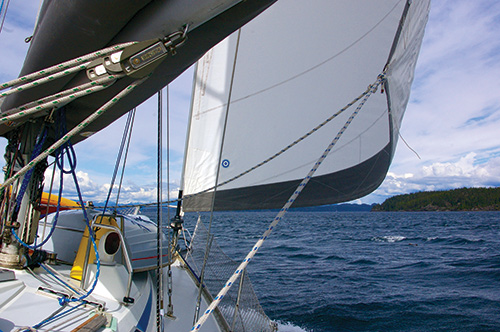
Buddy Boating
One of the very best things about cruising in the Pacific Northwest is that, for all the secluded splendor you can find, you can also be part of an incredible community of like-minded boaters. For those planning to make the big left turn and head south, cherish the friends you have at the marina, raft-up with in an anchorage, or have a few drinks with at the yacht club bar.
In Mexico, we were fortunate to meet up with close friends that we made in Seattle and then buddy boated with them through Central America. Then, they went west across the Pacific and we went east through the Panama Canal and into the Caribbean Sea. We still keep in touch, but I’m grateful for the times we had while cutting our cruising teeth around the Salish Sea. Not only do we value these relationships, but we really did share knowledge, both locally and abroad. Our collaborations in route planning, weather analysis, boat maintenance, and lots of other elements of seamanship helped everyone gain competence and confidence more rapidly.
Friends make cruising better. Don’t take your PNW boat buddies for granted, and be open to making new ones along the way.
Problems Happen
Any moderately experienced cruiser knows that issues arise on a boat, and some of them aren’t easy to fix in the moment. No matter how perfect you try to make your boat before casting off, even the newest and best gear can fail. What’s important is that you can either keep going and do without whatever’s broken, or you embrace making the best of any downtime in a location that may not have been part of your original itinerary.
While cruising in British Columbia, we had unexpected engine problems that were beyond my scope as an amateur mechanic. We found a capable mechanic in Ganges on Salt Spring Island and ended up spending two weeks there, thoroughly enjoying the town and island. We took this important lesson to heart when the same thing happened years later in the Caribbean. Our transmission failed and the fix happened on the island of Curaçao. We ended up absolutely loving it there and definitely hope to go back. This ability to adjust and adapt with a positive attitude is definitely a cruising skill.
When boat problems didn’t stop us in our tracks, we’ve simply done without. In Mexico, our old water heater developed a leak and then gave out. I took it out, donated it to a worker at the boatyard, and on we went. We’ve gone years with it now and haven’t missed it.
For the Charterers
In reality, I know that the vast majority of boaters aren’t heading out for years of cruising. It’s not everyone’s dream, and other obligations or hobbies can need attending to. The good thing is, lots of people charter boats in exotic locales around the world, and if you’re one of them, some of our learning and tips may be helpful.
Yacht charters are supposed to be relaxing sailing vacations with friends and family in beautiful locations, but there are several pitfalls that can cause them to go awry. When I taught charter cruising in the British Virgin Islands, the biggest mistake I saw eager charterers make is to try and stick to a strict schedule. Yes, you obviously are going to have an overarching plan, but it’s important to be open to change. Maybe the weather isn’t cooperating or one of your crew wants to add a stop that you didn’t have on the itinerary. Being flexible will make it a lot more enjoyable for everyone.
Speaking of schedules, if you can, give yourself extra time by arriving at least a day early and staying an extra day after your charter ends. Chances are, you flew a long way to get to your charter, so rushing in and jumping on a boat you’ve probably never used before and then getting out of the marina can be stressful for all involved. Likewise, when you come back, give yourself at least an extra day to enjoy where you are rather than rushing to the airport. You’ll thank yourself later.
Another flub that people who may be less experienced at living day-in-day-out on a boat make is to rip through their supply of freshwater. This happens all the time on charter boats. Like I said above about self-sufficiency, you only have a finite amount of resources on your boat. If you use all the freshwater showering and doing dishes, you’re going to have to either go back to the charter base or find a marina. That equates to lost time and, if you’re trying to stick to that almighty schedule, you’ll get behind and will be left with unnecessary stress.
The nice thing is that anyone who has spent a great deal of time cruising Puget Sound is likely to find many charter locations dead easy when it comes to the actual sailing. The tides and currents, weather changes, and wind shifts mean that PNW sailors are trained to be on their nautical toes in a way that simply may not be as necessary elsewhere, even in unfamiliar waters. Navigationally, our time in the South Sound proved useful when other areas with narrow passages and shallows required constant diligence.
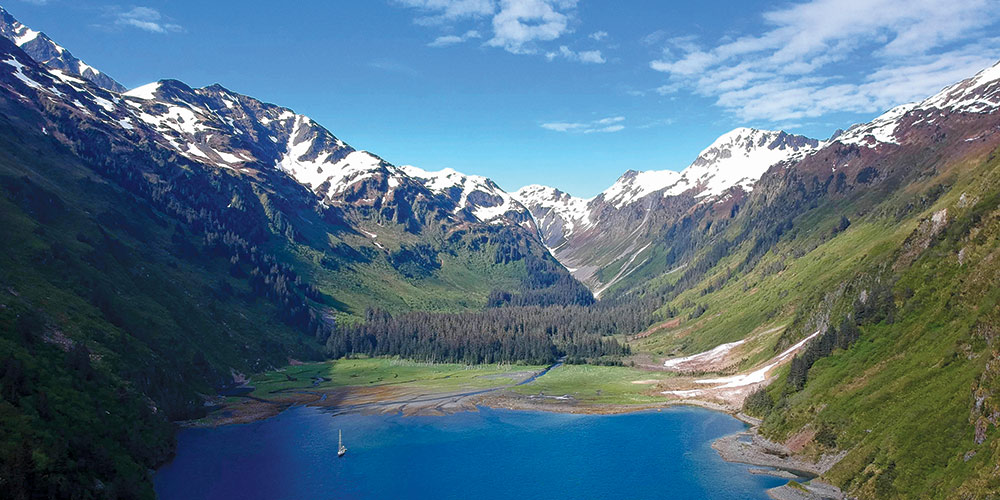
Have Fun
In the end, cruising is supposed to be a fun and rewarding experience. Yes, there are challenges that come with the fun, but I’ve always said that the highs of the cruising life are far higher than the lows. That’s been true for us since we bought Yahtzee in 2012 in Seattle, and it’s still true today as I type this at the nav desk while anchored in sunny and breezy St. Barths.
Whether you get out for a weekend, a month, the summer, for many years, or on a charter, I wish you the best of luck and cruising success. Your experience on the waters of the Pacific Northwest will undoubtedly help you develop your own bag of tips or tricks to share with the cruisers who follow in your wake.
Andy Cross is the editor of 48° North. After years cruising the Pacific Northwest and Alaska with his family aboard their Grand Soleil 39, Yahtzee, they sailed south and are currently in the Caribbean Sea. You can follow their adventures at SailingYahtzee.com
Andy Cross
Andy Cross is the editor of 48° North. After years cruising the Pacific Northwest and Alaska with his family aboard their Grand Soleil 39, Yahtzee, they sailed south and are currently in the Caribbean Sea. You can follow their adventures at SailingYahtzee.com.
